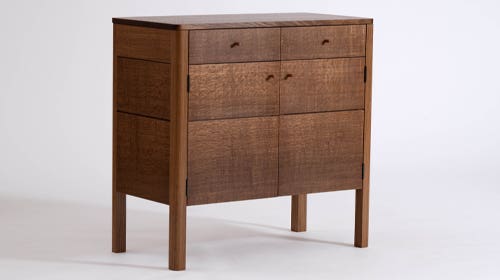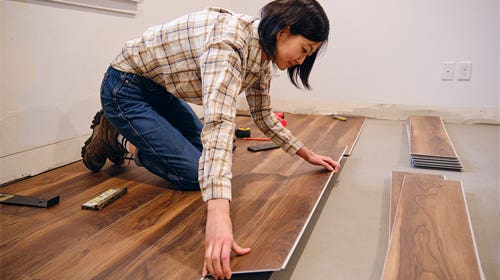Design winners gained credibility at IWF
Consider this: You’re twenty-something years old and your work is being exhibited at IWF 2008, the largest woodworking show in North America. Take it a step farther and imagine you…
Consider this: You’re twenty-something years old and your work is being exhibited at IWF 2008, the largest woodworking show in North America. Take it a step farther and imagine you are one of the seven winners out of 75 Design Emphasis finalists and a record number of more than 300 entries in the woodworking competition.
The contest was open to any student enrolled in an accredited college or university and in an undergraduate furniture design course. As one would expect, the consensus from the winners was that the competition — along with the show — was a valuable career-enhancing experience for up-and-coming designers.
Austin Rhodes, for example, who won in the Seating category for his cherry chair with a black leather upholstered seat, says he believes winning the award will help him to establish credibility, which will hopefully lead to some commission work and access to the high-end gallery market.
“The constructive criticism from the judges was extremely valuable,” Rhodes says. “A design can always be improved upon, and the job is never done. The next version of this chair should be more refined, and the next derivative should go on a step further still.”
Entries were judged on design (40 percent); manufacturing capabilities (25 percent); marketability (20 percent); and workmanship (15 percent). Max S. Shangle, furniture design professor at Kendal College of Art and Design in Grand Rapids, Mich., was one of this year’s judges. He says the entries demonstrated widely ranging style, expression and techniques.
“This year’s entries showed a greater consideration and understanding of the broader furniture market. In years past, I think there was more personal expression, products designed to serve the designer with less regard to answering the needs of buyers. I feel this is a significant and welcome shift.
“There also seemed to be a wider understanding of technology on the part of the students, and they utilized it not because they could, but because they should. It was more about application and less about experimentation.”
Justin Peart, from Western Michigan University, won the Ready to Assemble category for a coffee table featuring a maple veneer wood base with a triangular glass top. He says he came up with many table designs before settling on this one for his class project. One of his goals was to create a simple design that could be easily manufactured, yet unique in aesthetic look.
At IWF, Peart got leads from several manufacturers in Grand Rapids, Mich., who invited him to see their facilities. And while walking through the show, he discovered new items that might assist in manufacturing his table, such as vacuum formers. Most importantly, he returned home inspired to continue designing.
“If you have an idea, keep going,” says Peart. “Don’t stop at the idea, actually make it and see what it looks like. If you believe in yourself, you can just keep going with it, and in the end it will pay off.”
Greg Klassen won first place in the Case Goods category for his bowfront sideboard cabinet and second place in Seating for his Vickleby side chairs. He says designing the cabinet started with a sketch, which he made into a full-scale cardboard model. He then drew on the doors and drawers, which gave him a true sense of the volume and proportions of the piece.
Klassen completed the furniture program at the College of the Redwoods and has recently opened a custom furniture shop in Bellingham, Wash.
Jonathan Cox, from Brigham Young University, had two entries and placed with an Asian-influenced king-size bed. After toying with ideas for weeks, Cox produced a unique double head and footboard design.
“This allowed for an inch-and-a-half of negative space between the panels,” says Cox. “What made the design process so tedious was studying dozens of wood joints and trying to incorporate them into the bed to result in a product that was structurally sound and appealing.”
Cox put about 400 hours into the bed and learned a couple important lessons from the judges. “They repeatedly stressed that furniture needs to appeal to an audience or clientele; it has to sell.
“I also learned that it seems that this world is run by a few design companies. Styles, trends, and ‘what’s hot for 2009’ are determined by a few people and spread throughout the world as the accepted thing among all. I bring this up because I fear for companies that will adhere to these preset trends and soon learn that their investment will be here and gone like a junior high yo-yo craze.”
The article originally appeared in the November 2008 issue.







